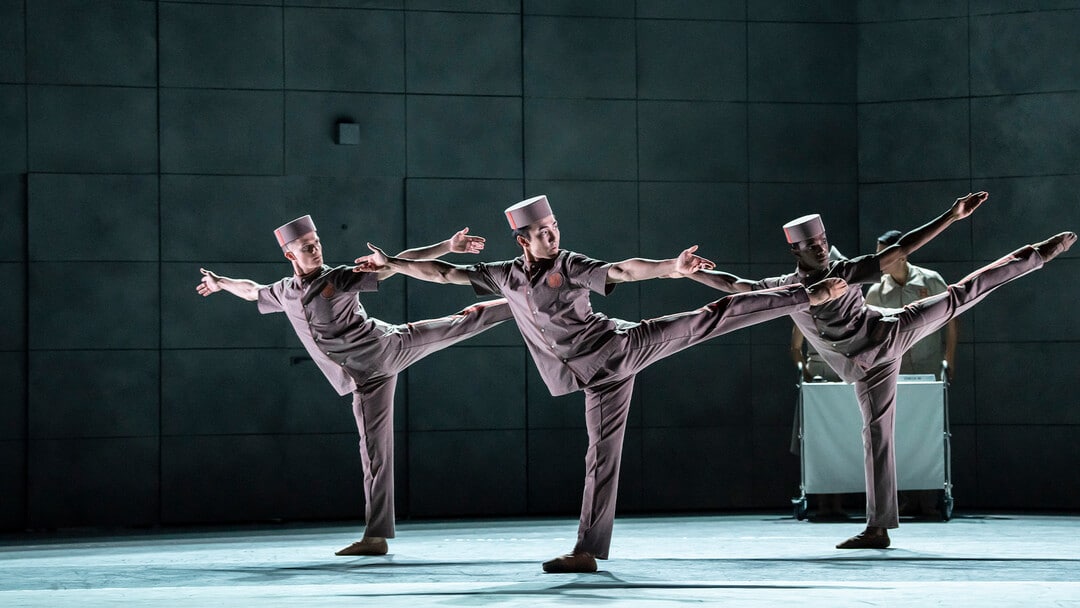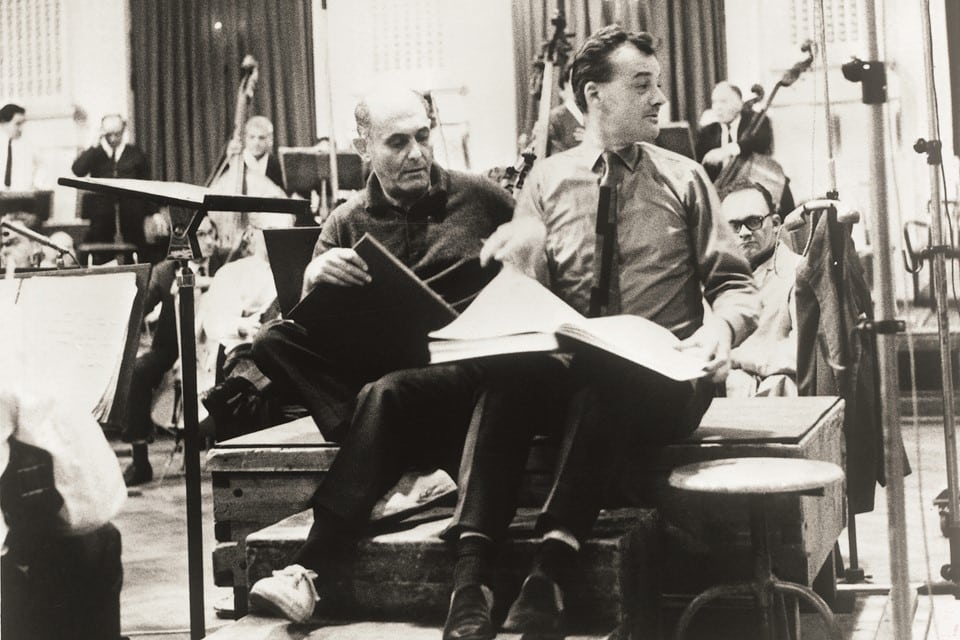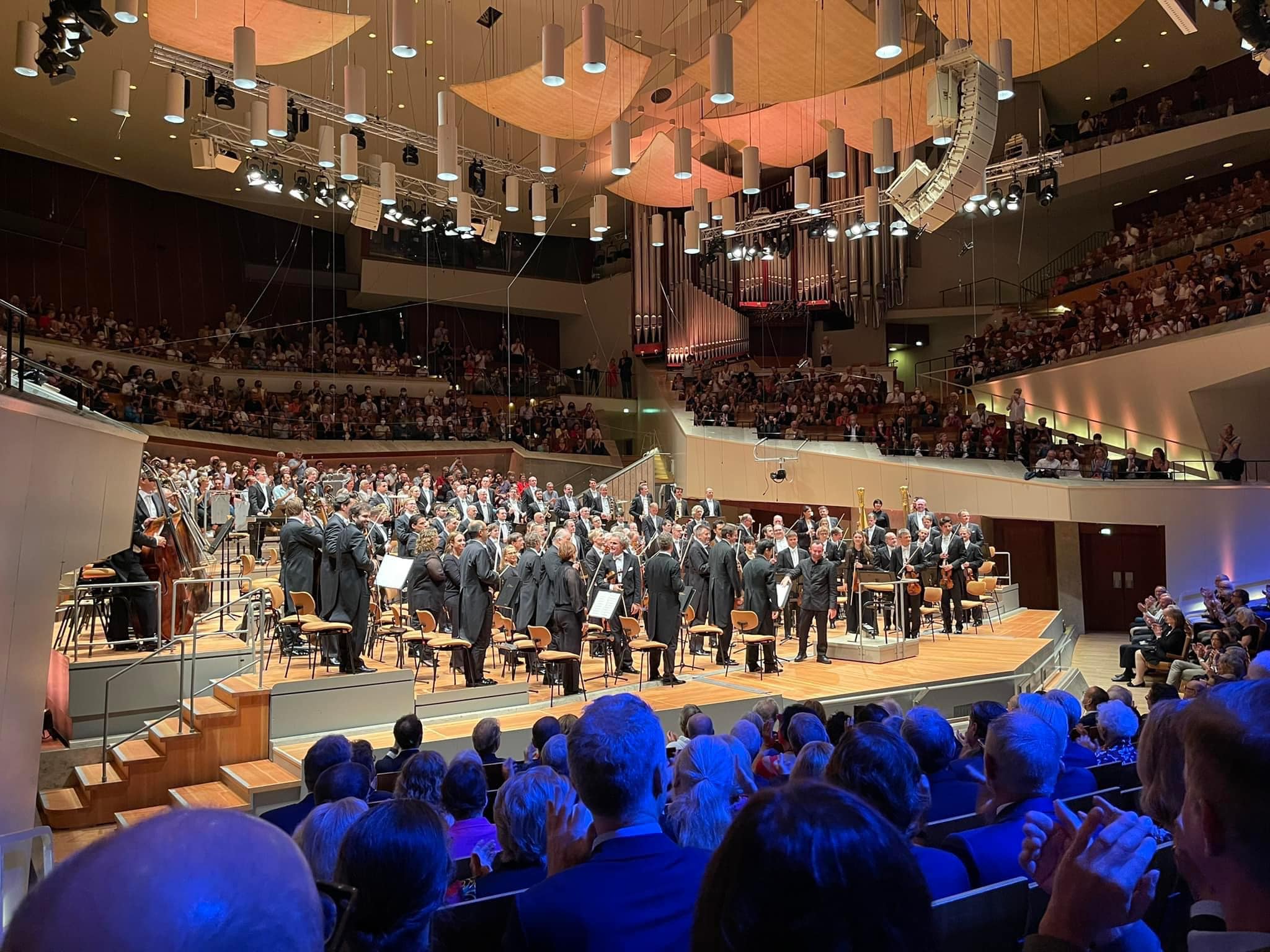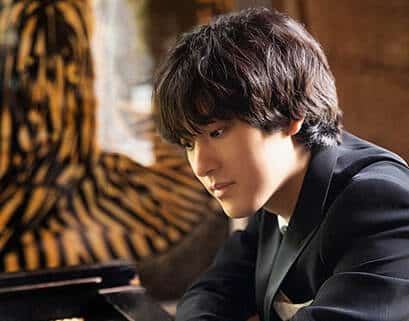Alastair Macaulay: Carlos Acosta cannot get into the music
NewsOur chief dance critic is dismayed by last night’s Birmingham shambles at Sadlers Wells Theatre.
Into the Music SadIer’s Wells Birmingham Royal Ballet
by Alastair Macaulay
The title of Birmingham Royal Ballet’s triple bill Into the Music addresses the issue that, for many people, is fundamental to dance as art: the harmony between sight and sound, and specifically the response of choreography to music. The programme, which opened in Birmingham last month and runs all this week (November 2-5) at Sadler’s Wells Theatre, is also an important introduction to the taste of the Birmingham Royal’s new artistic director, Carlos Acosta, who, taking the job immediately before the 2020 lockdown, has still achieved relatively little. The three scores are agreeably played by the Royal Sinfonia, conducted by Koen Kessels. The final work is to Beethoven’s symphony no 7, which Wagner called “the symphony of the dance”; it introduces many of us to the choreography of Uwe Scholz, who made more than a hundred ballets (mainly in Zürich and Leipzig) before dying in his forties in 2004.
There are, however, pervasive problems. Each of these ballets is choreographically horrid – each a different kind of horrid – and in two cases vile. They are delivered with over-emphatic facial expressions that further undermine the choreography, powerfully communicating the dancers’ belief that the choreography cannot be trusted to make its own expressive points. And these ghastly facial exaggerations are surely Birmingham Royal characteristics that pre-date Acosta.
Jirí Kylián’s Forgotten Land (1981) and Scholz’s The Seventh Symphony (1991), both of which had their premieres with the Stuttgart Ballet, are over-scaled responses to important works of classical music. Forgotten Land is to Benjamin Britten’s Sinfonia da Requiem. (Why did Scholz title his Beethoven ballet The Seventh Symphony as if there were no seventh symphonies by such composers as Haydn, Mozart, Schubert, Mendelssohn, Bruckner, Mahler, Shostakovich?) It’s hard to spot a small step in either Kylián’s or Scholz’s ballets. The Seventh Symphony has a very few passages of footwork that do not stretch above the waist, but also all the evening’s most appallingly over-scaled images.
Ballet is an art of spatial complexity and three-dimensional plasticity, and yet both Forgotten Land and The Seventh Symphony are made with minimal use of diagonals in either space or use of the body: horizontals and verticals are almost all you see. When you see The Seventh Symphony starting with the same choreographic device as Forgotten Land – numbers of dancers all facing upstage, backs to the audience – you wonder why on earth Acosta had the daft idea of putting them on the same program.
The late Clement Crisp, dance critic to the Financial Times for decades, enjoyed comparing Kylián’s brutalist, unsubtle, over-intense choreography to the torments of the dentist’s chair. Crisp was by no means wrong about Kylián, and yet Forgotten Land is the most evening’s refined work. Only in Forgotten Land , for example, do we see partnering as something two-way, with women sometimes supporting men. Although Kylián’s women are too often lifted, propelled, and supported by their men in huge shapes, these shrivel beside the epic horrors of Scholz’s Beethoven manipulations.
Or do you like Women As Bendy Toy choreography? Well, it’s a regrettably large genre, with the Stuttgart Ballet a leading proponent for overt fifty years (and the Royal Ballet at Covent Garden catching up more recently). If so, don’t miss The Seventh Symphony.
To a minor transitional passage of music in the first movement of The Seventh Symphony, multiple women, in the splits on the floor and heads down, are dragged horizontally onto and across the stage by their men. (Few images of the systematic degradation of women have dismayed me more.) To a gentle, poignant melody later in the work, a ballerina is brought onstage with her legs wide apart carried overhead. This isn’t “into” the music; it’s offensively against it.
Wagner was no dance expert, but his “symphony of the dance” remark about Beethoven’s Seventh regrettably inspired many fatally over-ambitious choreographers (including Leonide Massine and Twyla Tharp) to burn their fingers on it. Many of us especially love the sublime Adagietto second movement of Beethoven’s Seventh, where Scholz’s both militaristic and marionette-like, anti-humane, use of dancers proves especially galling.
In what ways does Acosta think Morgann Runacre-Temple’s Hotel is “into the music”? This foolish piece is chiefly an essay on the meeting of live film and choreography, but its music, by Mikael Karlsson, is trivial, tepid, semi-jazz, largely applied as a film score, as imposed atmospherics. The story is silly, a camply surreal essay (very sub-Matthew Bourne – think of his Play without Words) about guests and hotel staff and – oh no – food poisoning. There are no interesting steps or configurations. The film technology, sometimes suggesting multiple locations, is the only feature of note.
In Hotel, Beatrice Parma (the Assistant Manager) and Tzu-Chao Chou (the Manager) direct knowingly wide-eyed gazes both at camera and at audience: film sometimes expands their faces to stage height. Chou plays the fourth movement of The Seventh Symphony with epic-scale smiles of roguish flirtation, while the very pretty Céline Gittens maintains the same big smile throughout the first movement. Most of the dancers follow suit: this Birmingham broadcasting of facial coquetry could not be worse for Beethoven.
photo: Jan Persson/BRB






As soon as Mr. Macaulay talks about music, he makes mistakes. Wagner said “apotheosis of dance” regarding Beethoven’s 7th (not symphony of the dance). Regarding other composers of seven or more symphonies, he mentions Mendelssohn who wrote only five (unless he is talking about the youthful string symphonies, which I seriously doubt). Finally, I don’t think anyone would mistake “the Seventh Symphony” as being written by Haydn or Mozart… Bottom line is : stick to ballet, Mr. Macauley.
Macauley’s comments about Kylián make me wonder if he knows much more about choreography.
Koen Kessels did not conduct the whole triple bill at Sadler’s Wells last night; he conducted Hotel only. Thomas Jung conducted the other two pieces. This is made clear on the cast list
Edit: Maestro Kessels only conducted Karlsson’s piece
Sounds awful and not the first complaint I’ve heard about Acosta.
Shame as ‘Into the Music’ isn’t a bad idea for a ballet programme though, given how sidelined the music usually is by ballet reviewers – most reviews read as if the ballet were danced to silence. (And even by ballet companies themselves – often the orchestra isn’t very prominent at all on their websites or in programme brochures, for example.)
Indeed! And (as I was there last night as a music lover and relatively new to ballet) it must be said that the musical quality for the two masterpieces (by Britten and Beethoven) has been exceptional! I would have enjoyed to hear this musical performance on the concert platform. Thank God they managed to not sacrifice the music for the dance which so often is the case!
Glad to hear the music was so well-played at least, thanks for the insight.
I couldn’t agree more! Thomas Jung, who conducted both Britten and Beethoven, is a conductor to watch out for! His Britten had an incredible energy and during Beethoven I just closed my eyes – as I didn’t like the choreography – and enjoyed listening to the music. I think the music making on that evening was outstanding overall!
It wasn’t awful at all. Have a look at what the other critics have to say!
What a sad level of criticism. You have to be a very unhappy man.
I’ve often thought dance divides audiences and critics more than any other art form. Clearly, Mr Macauley saw a performance that was very disappointing for him. However, as others have pointed out, his view is an outlier, with major, experienced reviewers giving it 4*. Having just seen it, I share their enthusiasm for a varied, beautifully danced programme. While Mr Macauley is entitled to criticise the show, his decription of choreographers’ work as “vile” is beyond the bounds of fair criticism. The management of Slipped Disc should consider whether this is responsible journalism, enhancing their website.
So you believe in censorship of opinions you disagree with…..Sad
I’ve seen the matinee show yesterday and don’t understand Mr Macaulay’s criticism at all! Every piece was danced and played with utter dedication and at the end of Forgotten Land I had tears in my eyes and saw quite a few people in the auditorium weeping too. No wonder as Britten was played with sheer love!!! And the dancers reflected that on stage with surrender. Hotel is very innovative as a theatrical piece. There were some genius moments for sure! Not so sure about the dancing in it but the music is fun and enjoyable. 7th Symphony was on fire and the dancers looked amazing. The choreography is unforgiving and asks perfection but they really achieved that. I have to admit that I was very sceptical indeed about Beethoven 7th played for a ballet and expected a rather odd reading. But quite rightly the orchestra got standing ovations in the end.
Beethoven 7 is a repetitive, shambling, galumphing oaf of a symphony (exquisite 2nd movement excepted). Just because someone famous once called it ‘apotheosis of the dance’ doesn’t mean they were right. I can think of many classical works that cry out and deserve to be choreographed…much Debussy is quintessentially unchoreographed ballet that doesn’t mug the listener with it’s revolutionary clogs.
‘Vile’ is the correct word for this review, which is unnecessarily mean spirited and reductive – the ‘very pretty Celine Gittens’ is a dancer of tremendous power and talent, and the whole company is dancing with renewed verve and impressive technique under Acosta’s leadership.
Incidentally, I imagine the photograph is by dance photographer Johan Persson, not the jazz photographer Jan Persson.